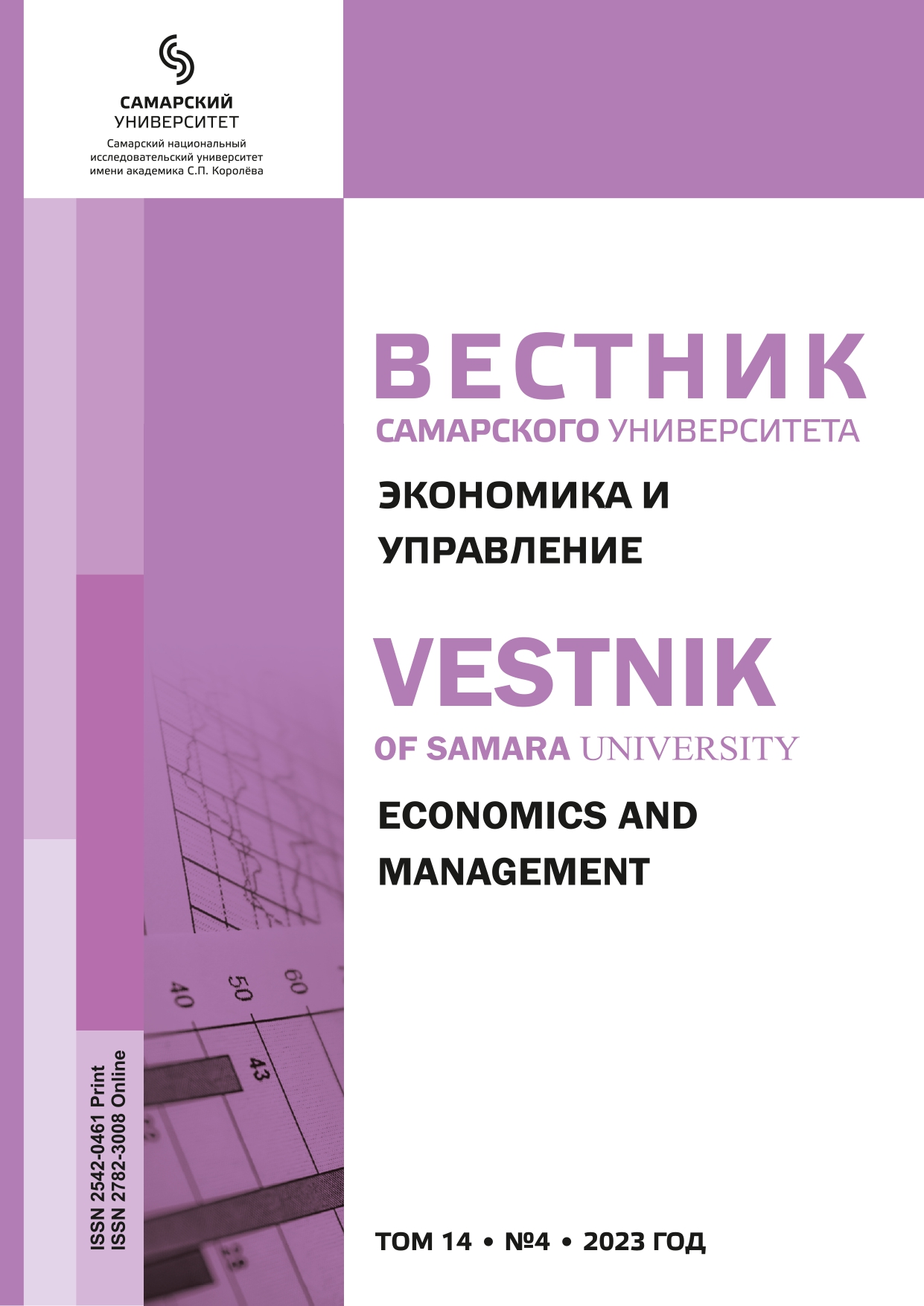Digital discrete simulation model of profit formation taking into account the dynamics of cash flows, the level of quality of labor resources
- Authors: Shchelokov D.A.1
-
Affiliations:
- JSC «RCC «Progress», Samara National Research University
- Issue: Vol 14, No 4 (2023)
- Pages: 141-151
- Section: HUMANE RESOURCES MANAGEMENT
- URL: https://journals.ssau.ru/eco/article/view/27174
- DOI: https://doi.org/10.18287/2542-0461-2023-14-4-141-151
- ID: 27174
Cite item
Full Text
Abstract
An analytical and digital model of the problem of determining the optimal amount of investments in personnel training, taking into account restrictions on the dynamics of cash flows, has been developed. The proposed model differs from the existing ones in that the enterprise, managing the amount of investment in personnel training, changes the unit cost, the amount of staff salary costs and thus ensures the maximum amount of profit. To determine the effectiveness of investments in personnel training, the magnitude of the effect obtained by the enterprise from cost reduction is calculated and the amount of change in employee salaries is determined. Thus, to assess the effectiveness of investments in personnel training, the magnitude of the cumulative effect change is determined, taking into account the increase in profits by reducing the cost of the launch vehicle, reducing profits by increasing salaries to employees and the amount of investments in increasing the proportion of trained employees. An optimization problem has been formed, for which a computer simulation model has been developed and analytical conditions for the existence of an optimal value have been determined. Taking into account the dynamics of profit formation flows, the effectiveness of investments in personnel training was determined and it was shown that an increase in the share of trained employees per monetary unit of investment had an effect of more than 10 billion units. Using statistical data, the parameters of functional equations characterizing the dependence between the amount of change in unit cost and staff salary costs on the proportion of trained personnel are determined. As a result of solving a computer simulation model of the formation of the profit rate of an enterprise, taking into account investments in personnel training, a graph of the trajectory of changes in the profit rate when the proportion of trained employees changes to the optimal value is presented.
About the authors
Dmitry A. Shchelokov
JSC «RCC «Progress», Samara National Research University
Author for correspondence.
Email: dima-shhelokov@yandex.ru
ORCID iD: 0009-0004-1657-2625
Candidate of Economic Sciences, Advisor to the Deputy General Director for Personnel, associate professor of the Department of Economics
Russian Federation, 45, Gaya Street, Samara, 443086, Russian Federation, 34, Moskovskoe shosse, Samara, 443086, Russian FederationReferences
- Alexandrovsky N.M., Egorov S.V., Kuzin R.E. Adaptive control systems for complex technological processes. Moscow: NRE, 1973. (In Russ.)
- Anufriev I.K., Burkov V.N., Vilkova N.I., Rapatskaya S.T. Models and mechanisms of intra-company management. Moscow: IPU RAS, 1994, 72 p. (In Russ.)
- Bogatyrev V.D. Models and mechanisms of coordinated interaction in the tasks of crisis management. Samara: SNC RAS, 2004, 284 p. (In Russ.)
- Burkov V.N., Enaleev A.K., Novikov D.A. Mechanisms of functioning of socio-economic systems with information communication. Automation and telemechanics, 1996, no. 3, pp. 3–26. (In Russ.)
- Burkov V.N., Zazhnev A.Yu., Kulik O.S., Novikov D.A. Insurance mechanisms in socio-economic systems. Moscow: IPU RAS, 2001, 109 p. (In Russ.)
- Burkov V.N., Zazhnev A.Yu., Leontiev S.V., Novikov D.A., Chernyshev R.A. Mechanisms of financing regional development programs. Moscow: IPU RAS, 2002, 52 p. (In Russ.)
- Burkov V.N., Enaleev A.K., Novikov D.A. Mechanisms of functioning of socio-economic systems with information communication. Automation and telemechanics, 1996, no. 3, pp. 3–26. (In Russ.)
- Burkov V.N., Zazhnev A.Yu., Kulik O.S., Novikov D.A. Insurance mechanisms in socio-economic systems. Moscow: IPU RAS, 2001, 109 p. (In Russ.)
- Burkov V.N., Zazhnev A.Yu., Leontiev S.V., Novikov D.A., Chernyshev R.A. Mechanisms of financing regional development programs. Moscow: IPU RAS, 2002, 52 p. (In Russ.)
- Munipov V.M., Zinchenko V.P. Ergonomics: human-oriented design of equipment, software and environment: textbook for universities. Moscow: Logos, 2001, 356 p. b
- Novikov D.A. Theory of management of organizational systems. Moscow: MLSI, 2005, 584 p. (In Russ.)
- Shchelokov D.A. Intra-company mechanisms of budget management of a large industrial complex for the production of resource-intensive products. D.A. Shchelokov, D.G. Grishanov, G.M. Grishanov, S.A. Kirilina. Samara: Publishing House of the Russian Academy of Sciences, 2009. (In Russ.)
- Shchelokov D.A. Models of formation of mechanisms for stimulating and budgeting the activities of enterprises. D.A. Shchelokov, V.V. Altergot, D.G. Belova, D.G. Grishanov. Samara: Publishing House of the Russian Academy of Sciences, 2009. (In Russ.)
- Forrester J. World dynamics: Trans. from English. Edited by D.M. Gvishiani, N.N. Moiseev. Moscow: Nauka, 1978, 168 p. (In Russ.)
- Forrester J. Fundamentals of enterprise Cybernetics (Industrial Dynamics). Translated from English. Edited by D.M. Gvishiani. Moscow: Progress, 1971, 340 p. (In Russ.)
Supplementary files










